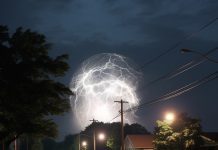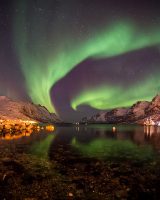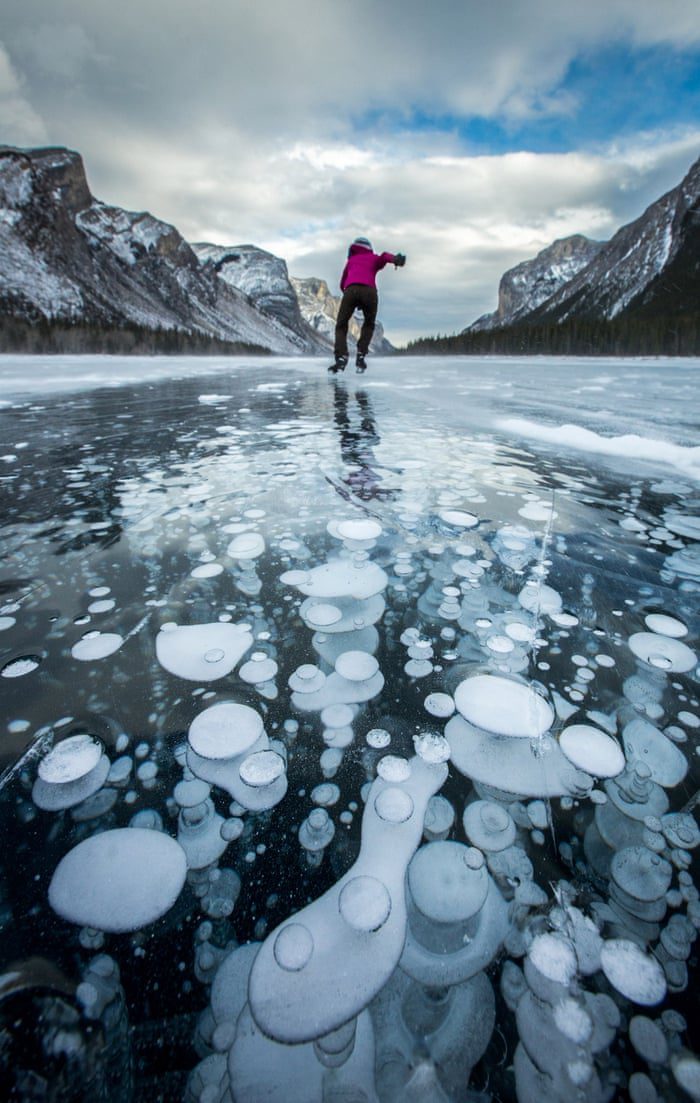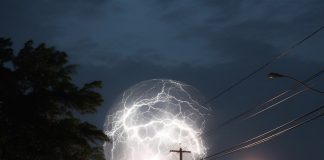Our planet is home to an array of wonderful natural phenomena that never cease to amaze and captivate us. In this blog post, we will uncover some of the most remarkable natural occurrences that have inspired us since time immemorial.
We will explore the enigmatic Morning Glory Clouds, a rare meteorological marvel with a fascinating formation process. Next, we’ll journey to Kerala, India, where Blood Rain occasionally tints the landscape in a crimson hue. Continuing our adventure through these amazing natural phenomena, we’ll dive into the depths of The Great Blue Hole and learn about its geological history as well as its vibrant marine life.
Further on our voyage, we shall uncover Lake Natron’s bright red waters caused by Haloarchaea organisms and discuss how life adapts within such extreme environments. Then, prepare for a mystery solved as we reveal the scientific explanation behind Sailing Stones’ movements across desert landscapes.
Last but not least important among these wonderful natural phenomena are Eternal Flame Falls in New York with their mesmerizing fire-and-water combination and Door-to-Hell – Burning Gas Crater, whose blazing inferno attracts tourists from around the world.
Morning Glory Clouds
Morning Glory Clouds are rare and fascinating natural phenomena that form bands of roll clouds traveling at a rate of 10 to 20 meters per second. These unique formations can consist of just one cloud or up to 10 consecutive roll clouds, making them an incredible sight for those lucky enough to witness them.
Formation Process and Conditions for Morning Glory Clouds
The formation process behind Morning Glory Clouds is still not entirely understood by scientists. However, it is believed that specific atmospheric conditions need to be met for these magnificent clouds to appear. Some factors include temperature inversion (when the air above the ground is warmer than the air below), humidity levels, and wind patterns. The National Weather Service provides more information on how these extraordinary cloud formations come into existence.
- Temperature inversion: A layer of warm air sits atop cooler air near the Earth’s surface, trapping moisture in between.
- Humidity: High humidity levels create ideal conditions for cloud formation as moist air rises and cools down.
- Wind patterns: Specific wind directions help align these layers in such a way that promotes the development of long rolling clouds known as Morning Glories.
Locations where these clouds have been observed
Morning Glory Clouds are most commonly seen over Northern Australia during September and October when favorable weather conditions prevail. The small town of Burketown in Queensland has become famous among meteorologists and nature enthusiasts alike, who flock there every year hoping to catch a glimpse of this mesmerizing phenomenon. In addition to Australia, sightings of the Morning Glory Clouds have been reported in other places worldwide, such as Germany, Russia, and the US.
Witnessing Morning Glory Clouds is undoubtedly a once-in-a-lifetime experience for nature lovers. Their rarity and beauty make them an extraordinary natural wonder that continues to captivate scientists and enthusiasts alike.
Morning Glory Clouds is a fascinating natural phenomenon, and it is interesting to explore other wonders of nature, such as the blood rain in Kerala, India.
Key Takeaway:
Morning Glory Clouds are a rare and fascinating natural phenomenon that form bands of roll clouds traveling at a rate of 10 to 20 meters per second. Scientists still do not understand the formation process behind these magnificent clouds, but it is believed that specific atmospheric conditions need to be met for them to appear.
Blood Rain in Kerala, India
The mysterious phenomenon known as blood rain occurs randomly in Kerala, India. This red-colored rainfall is thought to be caused by flying particles from a type of green algae native to the area. Locals enjoy walking in this unusual rain and capturing the moment on camera due to its rarity.
Scientific Explanation Behind Blood Rain Occurrence
Researchers have discovered that the cause of blood rain lies within microscopic airborne spores released by a particular species of green algae called Trentepohlia annulata. When these spores become suspended in water droplets during rainfall, they create an illusion of red or pink precipitation. The presence of iron oxide compounds within these spores further intensifies their coloration upon contact with moisture. For further information about this captivating phenomenon, please refer to National Geographic’s article.
Cultural Significance and Local Reactions
In addition to its scientific intrigue, blood rain has also captured the imagination and curiosity of locals who live near affected areas. Many residents view it as a unique natural wonder that sets their region apart from others around the world.
- Festivals: Some communities even organize special events or festivals celebrating this rare occurrence when it happens.
- Social Media Buzz: Blood rain often generates considerable excitement on social media platforms like Twitter and Instagram, where users share images and videos documenting their experiences under crimson skies.
- Folklore & Superstitions: Historically speaking, people have attributed various supernatural explanations for such phenomena; however, modern science has debunked these myths and provided a rational understanding of the underlying causes.
For an in-depth look at how locals react to blood rain, read this fascinating account from BBC News.
The phenomenon of blood rain in Kerala, India, is a truly fascinating event that has captivated the attention of locals and scientists alike. Taking a look at another natural wonder, let us explore the Great Blue Hole, which is located off the coast of Belize.
The Great Blue Hole
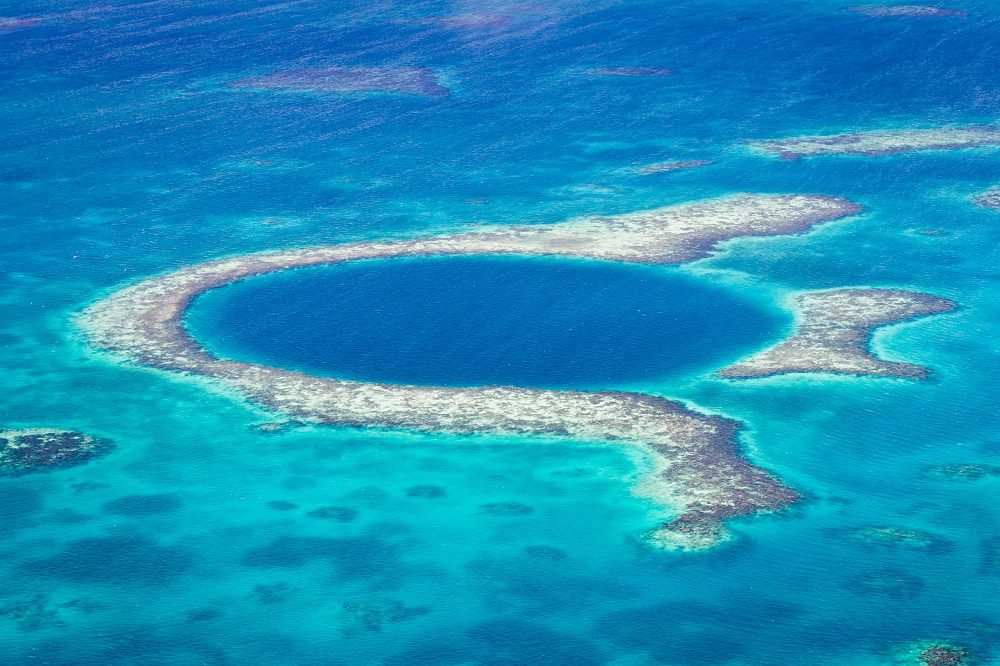
Located off the shore of Belize, the Great Blue Hole is a renowned underwater abyss popularized by Jacques Cousteau. Formed over 15,000 years ago when sea levels were much lower than today’s levels, it has become an iconic underwater destination attracting divers from around the world.
Geological History and formation process
The Great Blue Hole was initially formed as a limestone cave during the last ice age. As sea levels rose, the cave system flooded and eventually collapsed, creating this massive circular hole measuring approximately 1,043 feet in diameter and 407 feet deep. The unique geological features of this natural wonder make it an ideal location for studying ancient climate changes and providing insights into Earth’s history.
Marine life inhabiting the Great Blue Hole.
Inhabiting the Great Blue Hole, a variety of marine life can be found, ranging from Caribbean reef sharks to nurse sharks and even elusive hammerhead sharks. Divers exploring this underwater marvel can encounter various species, such as Caribbean reef sharks, nurse sharks, midnight parrotfish, and even elusive hammerhead sharks. Additionally, vibrant coral formations adorn parts of its walls, while stalactites remain preserved in deeper sections.
- Caribbean Reef Sharks: These apex predators are commonly found patrolling around coral reefs throughout their range in Central America and northern South America.
- Nurse Sharks: Known for their docile nature and preference for resting on sandy bottoms during daylight hours before becoming more active at night to hunt for prey.
- Midnight Parrotfish: Sporting a striking blue coloration, these herbivorous fish play an essential role in maintaining the health of coral reefs by grazing on algae that can otherwise smother corals.
- Hammerhead Sharks: Although sightings are rare within the Great Blue Hole, these unique sharks, with their distinctive head shape, occasionally make an appearance, to divers’ delight.
The Great Blue Hole is not only a geological wonder but also a thriving ecosystem that supports diverse marine life. Its formation process and rich biodiversity continue to captivate scientists and divers alike, making it one of the most sought-after underwater destinations worldwide. To learn more about this fascinating natural phenomenon or plan your own diving adventure, visit Belize’s official tourism website at TravelBelize.org.
The Great Blue Hole is an extraordinary natural occurrence that has fascinated researchers and outdoor enthusiasts alike. Next, we will explore Lake Natron – The Bright Red Lake to learn about its unique haloarchaea organisms and extreme environment.
Key Takeaway:
A large underwater cavity near the Belizean shoreline that was formed thousands of years ago, the Great Blue Hole is an awe-inspiring natural phenomenon. It’s not only a geological wonder but also home to diverse marine life such as Caribbean reef sharks, nurse sharks, midnight parrotfish, and even elusive hammerhead sharks.
Lake Natron – The Bright Red Lake
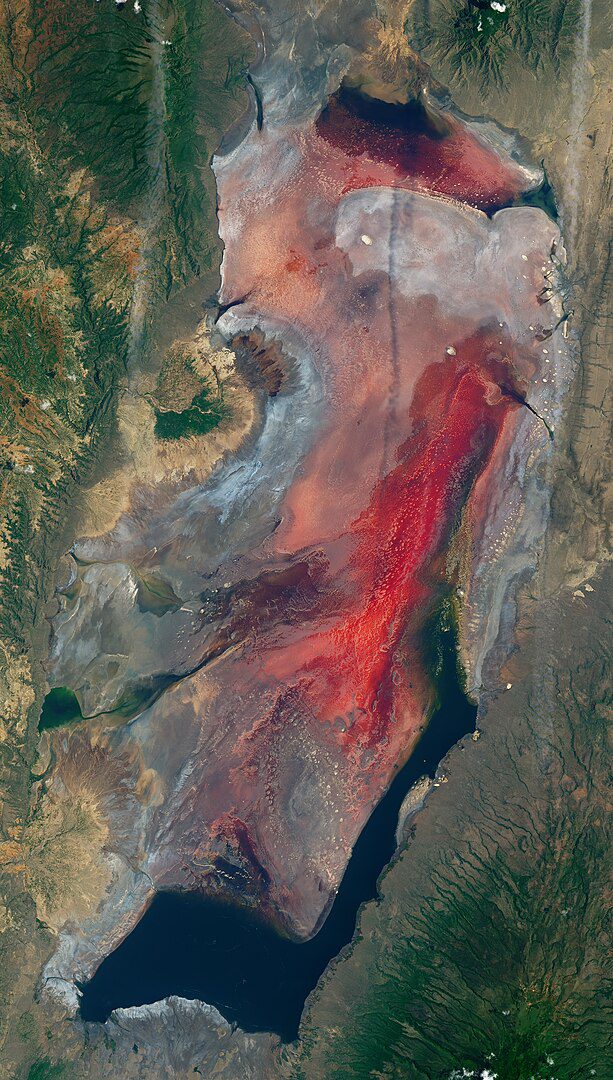
Tanzania’s Lake Natron boasts an intense red color due to Haloarchaea microorganisms living within its salty waters. With temperatures reaching up to 140 degrees Fahrenheit because of nearby volcanic activity, this vibrant lake offers both striking beauty and harsh environmental conditions.
Role Played by Haloarchaea Organisms in Creating Lake’s Coloration
The unique reddish hue of Lake Natron is attributed to the presence of salt-loving Haloarchaea microorganisms. These single-celled creatures thrive in high-salinity environments and produce a pigment called bacterioruberin that gives them their distinctive red color. When large populations of these organisms gather in the water, they create a vivid display that can be seen from miles away.
Adaptations Required for Survival within Extreme Environment
In order to survive the inhospitable conditions found at Lake Natron, various species have developed remarkable adaptations. For example:
- Haloarchaea: As mentioned earlier, these microorganisms are capable of withstanding high levels of salinity and temperature thanks to their unique cellular structure and protective pigments.
- Lesser Flamingos: Despite the harsh surroundings, lesser flamingos (Phoeniconaias minor) flock here during breeding season as it provides a safe haven from predators due to its alkaline nature. They feed on Spirulina algae which also thrives in such extreme conditions; interestingly, the algae’s beta-carotene content is responsible for giving flamingos their characteristic pink color.
- Alkaliphilic bacteria: These microorganisms are able to survive in high pH environments by maintaining a stable internal pH. They play an essential role in breaking down organic matter and recycling nutrients within Lake Natron’s ecosystem.
Lake Natron serves as a prime example of how life can adapt and thrive even under the most extreme conditions. The mesmerizing allure of this amazing spectacle enthralls onlookers from far and wide, demonstrating the remarkable fortitude and versatility of nature.
Lake Natron’s mysterious red hue is an incredible natural phenomenon that has been explained by the presence of Haloarchaea organisms. The next heading will explore another strange occurrence in nature, as researchers have finally solved the mystery behind sailing stones’ movements.
Key Takeaway:
Lake Natron in Tanzania is a bright red lake due to the presence of Haloarchaea microorganisms that produce a pigment called bacterioruberin. The lake’s extreme conditions have led to remarkable adaptations by various species, including flamingos and alkaliphilic bacteria, showcasing nature’s resilience and adaptability.
Sailing Stones Mystery Solved
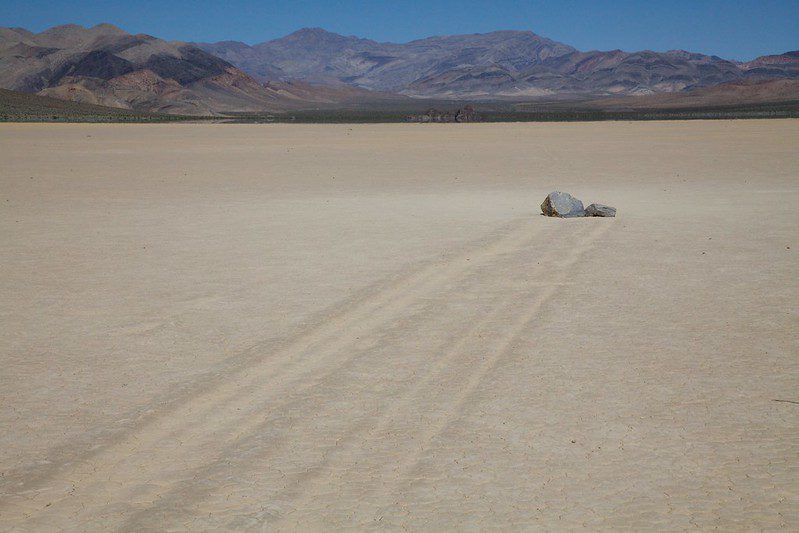
The enigmatic sailing stones found in Death Valley National Park have long baffled scientists and visitors alike. These mysterious rocks appear to move across the desert landscape without any apparent force propelling them. However, recent scientific research has finally unraveled the secret behind their movement, shedding light on this fascinating natural occurrence.
The Scientific Explanation for Sailing Stones’ Movements
For years, researchers were puzzled by how these massive stones could glide smoothly over the dry lakebed of Racetrack Playa in Death Valley. In 2014, a team headed by Norris from Scripps Institution of Oceanography revealed that thin ice sheets forming in the cold nights were an essential factor for the rocks’ movement.
As temperatures rise during daytime hours, melting ice creates slippery conditions between the rock and ground surface. Additionally, strong winds can push against these floating rocks causing them to slide along with ease. The process was captured using time-lapse video footage which provided definitive evidence supporting this theory.
To learn more about this groundbreaking study and see some incredible images capturing stone movements, check out Scripps Institution’s article on solving the wandering stones mystery.
Impact of Research Findings on Our Understanding of Natural Phenomena
- New insights: The discovery made by Norris and his team not only solved one longstanding mystery but also contributed valuable knowledge about how seemingly unexplainable events can be attributed to specific environmental factors such as temperature fluctuations or wind patterns.
- Encouragement for further research: The success of this study has inspired other scientists to investigate similar phenomena, leading to a deeper understanding of the natural world and its many wonders.
- Increased public interest: By demystifying the sailing stones phenomenon, researchers have captured the imagination of people worldwide. This increased awareness can lead to a greater appreciation for our planet’s unique features and inspire future generations to explore and protect Earth’s diverse ecosystems.
Scientific inquiry is a powerful tool for unlocking the secrets of nature. As we continue uncovering answers behind seemingly inexplicable events like Death Valley’s sailing stones, we gain a more profound appreciation for our planet’s incredible beauty and complexity.
The research findings of the sailing stones mystery have greatly enhanced our understanding of natural phenomena. With that, let us explore the Eternal Flame Falls in New York and its significance to hikers and nature lovers alike.
Key Takeaway:
Scientists have finally solved the mystery of the sailing stones found in Death Valley National Park. They discovered that thin sheets of ice forming around the rocks during cold nights played a crucial role in their movement, and strong winds could push against these floating rocks causing them to slide along with ease. This discovery not only solved one longstanding mystery but also contributed valuable knowledge about how seemingly unexplainable events can be attributed to specific environmental factors such as temperature fluctuations or wind patterns.
Eternal Flame Falls in New York
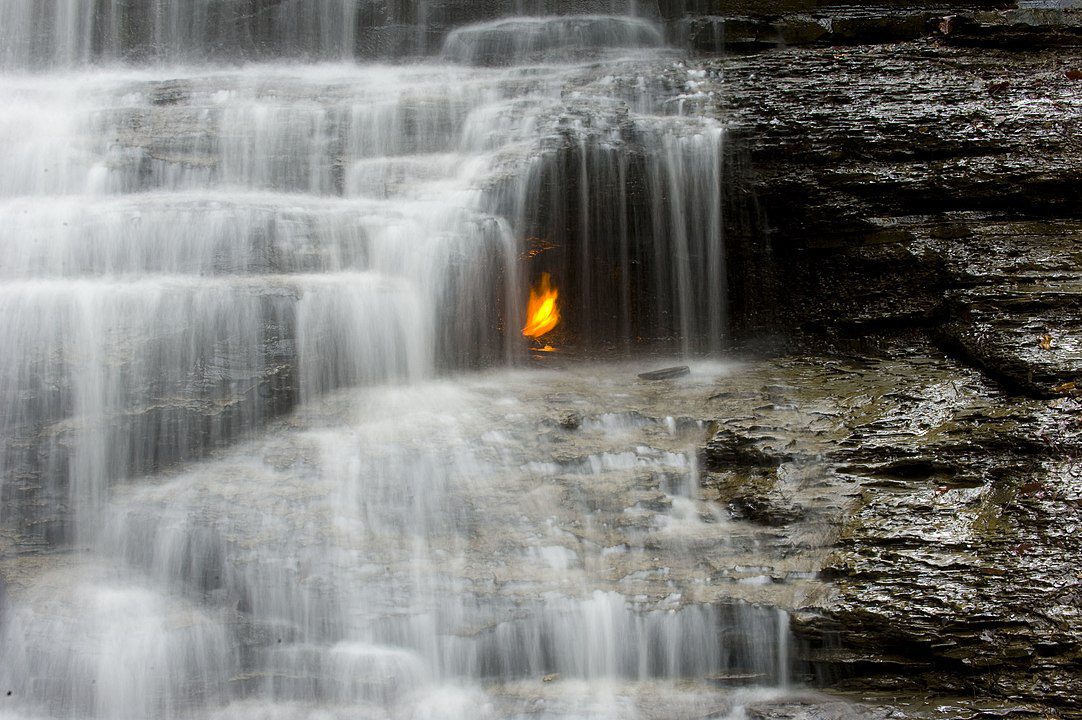
Hidden within a small waterfall in New York lies an incredible surprise – a chute of fire about eight inches tall. This flame is said to have been lit by Native American residents thousands of years ago and remains protected by the waterfall’s waters, creating a mesmerizing sight for visitors.
History and Cultural Significance of Eternal Flame Falls
The Eternal Flame Falls is located in Chestnut Ridge Park in Orchard Park, New York. The natural gas seep that fuels the eternal flame was likely discovered by indigenous people who inhabited the area long before European settlers arrived. They believed it held spiritual significance due to its seemingly endless burning nature.
In recent times, hikers visiting this unique site often bring along lighters or matches to reignite the flame if it has gone out due to heavy rain or strong winds. Many consider it a must-see destination when exploring Western New York’s beautiful landscapes.
How Hikers Maintain and Protect the Eternal Flame
- Pack necessary supplies: If you plan on visiting Eternal Flame Falls, be sure to carry waterproof matches or a lighter with you so that you can relight the flame if needed.
- Tread lightly: While hiking through Chestnut Ridge Park towards the falls, ensure that you stay on designated trails and avoid trampling any vegetation or disturbing wildlife habitats.
- Clean up after yourself: Practice Leave No Trace principles during your visit; pick up any trash you come across (even if it isn’t yours) and dispose of waste properly once back in civilization.
- Respect the flame: Do not attempt to extinguish or tamper with the eternal flame. It is a natural wonder and holds significant historical value for both Native American tribes and local communities.
The Eternal Flame Falls serves as a reminder of nature’s incredible power, resilience, and beauty. To maintain the Eternal Flame Falls for future generations, adhere to these instructions. For more information on how to visit Eternal Flame Falls safely and responsibly, check out this comprehensive guide.
The Eternal Flame Falls in New York is a unique and beautiful natural phenomenon that has captured the hearts of many nature lovers. Moving on to another equally spectacular wonder, let’s explore the Door-to-Hell – Burning Gas Crater located in Turkmenistan.
Key Takeaway:
Eternal Flame Falls in New York is a natural wonder that holds significant historical value for both Native American tribes and local communities. The flame was likely discovered by indigenous people who inhabited the area long before European settlers arrived. It remains protected by the waterfall’s waters, creating a mesmerizing sight for visitors. Hikers can help preserve this unique phenomenon by treading lightly, respecting the flame, and practicing Leave No Trace principles during their visit.
Door to Hell – Burning Gas Crater
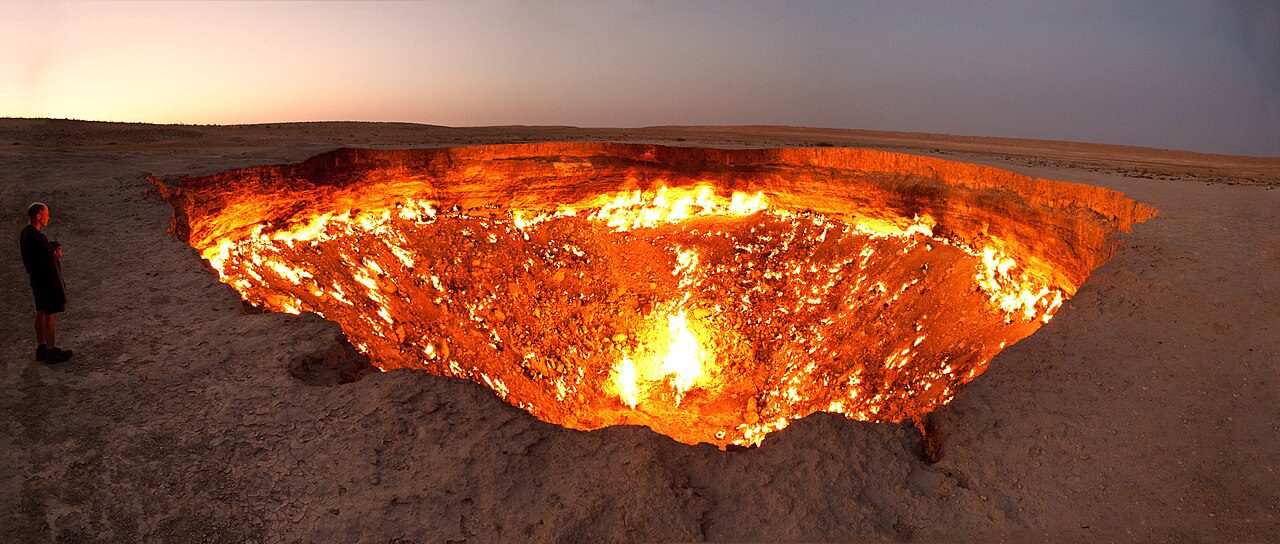
The Door to Hell is a burning gas crater located in Turkmenistan that has been ablaze for over four decades. This fiery phenomenon began in 1971 when geologists made the decision to set fire to the gas crater as a means of preventing methane gas from spreading into nearby towns.
Geologists’ Decision-Making Process Leading Up to Ignition
In an effort to prevent potential harm caused by escaping methane, geologists opted for what they believed would be a temporary solution: setting fire to the crater. They anticipated that the flames would burn out within just a few weeks. However, this prediction proved incorrect as the Door-to-Hell continues burning even today. The initial decision was based on safety concerns and environmental considerations, but it has since transformed into an unexpected tourist attraction.
Environmental Impact and Tourism Surrounding the Door-to-Hell Phenomenon
Despite the potential for negative environmental consequences of perpetual burning at this location, some view it as a chance to foster eco-tourism in Turkmenistan. Since 2009, more than 60,000 visitors have flocked to witness this unique natural wonder firsthand.
- Eco-Tourism: Despite its seemingly destructive nature, many tourists are drawn towards experiencing this rare occurrence while learning about its history and ecological implications.
- Safety Measures: Local authorities have implemented safety measures to ensure that visitors can safely observe the Door-to-Hell from a secure distance, minimizing any potential risks associated with its ongoing combustion.
- Research Opportunities: The Door-to-Hell phenomenon has also piqued the interest of scientists and researchers who study geology, climate change, and environmental science. These experts are keen on understanding how this long-lasting fire affects the surrounding ecosystem as well as global methane emissions.
Intrigued by this captivating natural wonder? Consider adding Turkmenistan’s burning gas crater to your travel bucket list for an unforgettable experience witnessing one of Earth’s most enduring fiery phenomena.
Key Takeaway:
Geologists set fire to the Door to Hell gas crater in Turkmenistan as a temporary solution to prevent methane gas from spreading into nearby towns. However, the flames have been burning continuously since 1971. It has become an unexpected tourist attraction that offers eco-tourism opportunities and research potential for scientists studying geology, climate change, and environmental science.
Colorful Rainbow Rock Formations at the Zhangye Danxia Landform
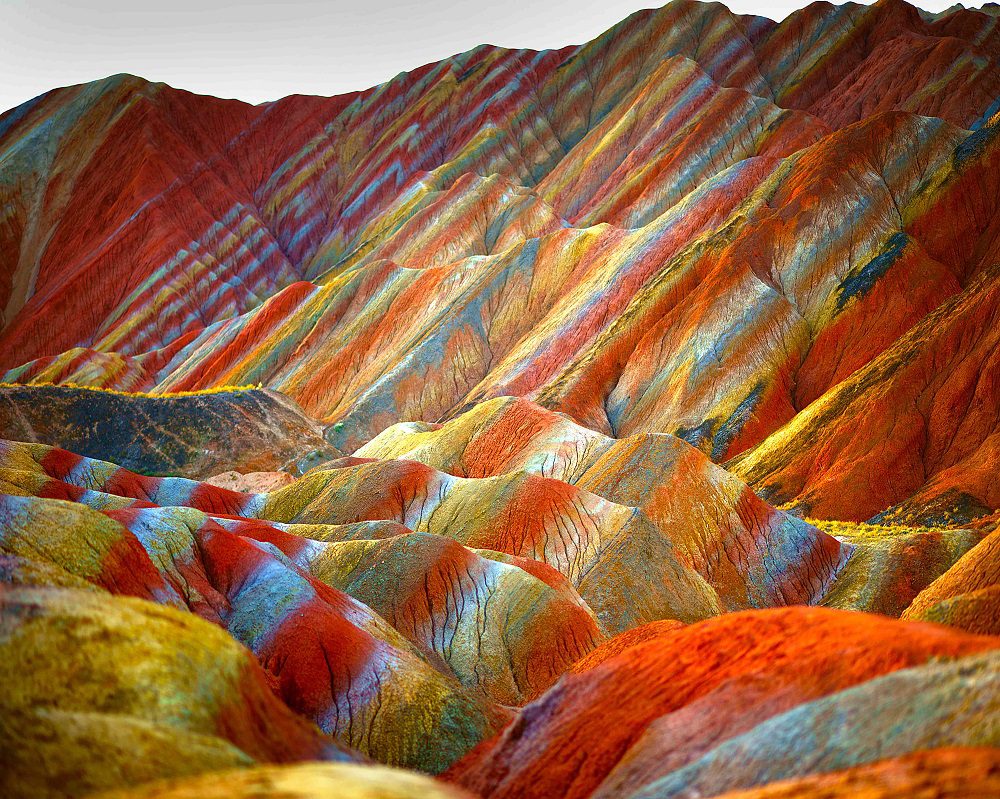
The natural world is full of wonders that leave us in awe. One such wonder can be found in China’s Gansu province, where a unique geological formation has created a stunning display of colorful rocks that resemble rainbows.
Zhangye Danxia Landform: A Natural Masterpiece
The Zhangye Danxia Landform Geological Park covers an area of over 500 square kilometers and is home to some of the most incredible landscapes on earth. The park features towering red cliffs, deep gorges, and rolling hills covered with vibrant hues ranging from yellow to green, blue to purple.
Rainbow Mountains: Nature’s Palette
The highlight of this park is the rainbow mountains, which are formed by layers upon layers of sandstone and other minerals being deposited over millions of years. These colors have been exposed due to tectonic shifts causing uplifts along with wind erosion, revealing these beautiful patterns.
Nature’s Artwork: A Must-See Phenomenon!
This breathtaking phenomenon draws visitors from all around the globe who come here every year just to witness nature’s artwork unfold before their eyes. The best time to visit is during sunrise or sunset when the colors are at their most vibrant and vivid.
The Zhangye Danxia Landform is a testament to the beauty of nature and its incredible ability to create art that leaves us spellbound.
Other Stunning Natural Phenomena

The Northern Lights, also known as Aurora Borealis, is an optical phenomenon that occurs in high altitudes in the Earth’s atmosphere. This stunning natural phenomenon produces a beautiful display of colorful lights that dance across the sky.
Another amazing natural phenomenon is volcanic lightning, which occurs during volcanic eruptions. This rare occurrence happens when ash particles collide and produce lightning within the volcanic plume.
The black sun is another stunning natural phenomenon that occurs when thousands of starlings gather and fly in a coordinated manner, creating a dark cloud that resembles a black sun.
Mammatus clouds are another beautiful natural phenomenon that can be seen in the sky. These clouds are characterized by their pouch-like shapes and are often associated with thunderstorms.
Light pillars are another optical phenomenon that occurs in cold climates. These vertical beams of light are created when light reflects off ice crystals in the air.
Catatumbo lightning is a natural phenomenon that occurs in Venezuela. This stunning display of lightning occurs over the Catatumbo River and can be seen for up to 140 nights a year.
FAQs About Wonderful Natural Phenomena
What is the most amazing natural phenomenon?
The most amazing natural phenomenon can be subjective, but one contender is the Aurora Borealis or Northern Lights. This mesmerizing light display occurs when solar particles collide with Earth’s magnetic field, creating a stunning visual spectacle in polar regions.
What are good examples of natural phenomena?
Some fascinating examples of natural phenomena include Morning Glory Clouds, Blood Rain in Kerala, The Great Blue Hole, Lake Natron’s bright red coloration, Sailing Stones Mystery solved, Eternal Flame Falls in New York, and Door to Hell – Burning Gas Crater. Each of these occurrences showcases unique aspects of our planet.
Conclusion
From the Morning Glory Clouds in Australia to the Door-to-Hell phenomenon in Turkmenistan, we have explored some of the most amazing natural phenomena that our planet has to offer. We learned about the scientific explanations behind these stunning occurrences and their cultural significance for local communities.
As nature lovers, it is important that we appreciate and protect these natural wonders for future generations to enjoy. Consider supporting conservation efforts or taking part in eco-tourism initiatives to help preserve these beautiful phenomena.






































